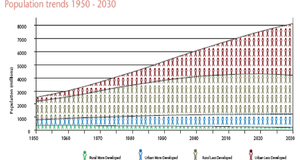An Ethnography of Water Birth and its Representations on YouTube
By
2011, Vol. 3 No. 06 | pg. 1/3 | »
IN THIS ARTICLE
KEYWORDS
AbstractThe purpose of this qualitative research study is to report semi-structured interview narratives from sixteen parents who had given birth immersed in water and posted their live birth videos on YouTube.com. This report introduces the concept of water birth as an alternative birth practice and discusses the contributions of anthropologists to the anthropology of birth. Anthropologists such as Mead, Sargent, Davis-Floyd, and Jordan call for the narratives women share related to their childbirth experiences, with specific attention paid to women who engage in childbirth activism and “reject standardized protocols” stating that "the methods and values of these activists, their language and discourse, beliefs and practices, successes and failures, have much to teach about intentional culture change"(Davis-Floyd,Sargent,1997: 12). My documentation of the experiential narratives my interviewees shared with me related to their water birth and their online social networking activities responds to that request. I discuss the narratives of my interviewee's experiences under the themes that emerged from their interviews. First, I discuss their experiences using the internet as a tool for self directed childbirth education and virtual networking with other mothers. Next, I discuss their experiences navigating birth options in their geographical location, with regard to birth location and birth attendants. Third, I discuss the types of authoritative knowledge that were influential to their birth decisions. Finally, I discuss the narratives they use to describe their personal experiences giving birth immersed in water. Anthropologists have sporadically studied childbirth in different cultures and contexts since the 1960's. In 1967 anthropologist Margaret Mead teamed up with psychologist Niles Newton and conducted a survey to assess childbirth practices cross-culturally. Their survey found that available data on the topic was scarce, so they proclaimed a need for quality birth ethnographies in anthropology. Following Mead’s and Newton's call for childbirth ethnographies, there were few anthropologists paying attention to childbirth as an area of anthropological inquiry until Brigitte Jordan published an ethnographic account titled Birth in Four Cultures: A Cross-cultural Investigation of Childbirth in Yucatan, Holland, Sweden, and the United States in 1978. After her book was published, researchers interested in ethnographies of childbirth steadily increased. Jordan's work emphasized the idea that, although birth is a biological process it is also clearly "everywhere socially marked and shaped" (Davis-Floyd, Sargent, 1997: 1). In an edited book titled Childbirth and Authoritative Knowledge: Cross-Cultural Perspectives published in 1997, cultural anthropologists such as Robbie Davis-Floyd and Carolyn Sargent call for today's anthropologists to gather women's birth narratives for their valuable insight into the language women use to describe their birth experiences. They also highlight a need for specific attention to be paid to childbirth activists who reject standardized protocols. They say "the methods and values of these activists, their language and discourse, beliefs and practices, successes and failures, have much to teach about intentional culture change"(Davis-Floyd,Sargent,1997: 12).Water birth is an alternative childbirth method where babies are born immersed in water. Water birth began appearing in published writings in the 1980's. Writings on water birth in anthropology are scant and nearly nonexistent, though some medical studies on water birth exist and appear to be continuing to emerge. The first people to publish about water birth were a Russian bio-researcher and midwife, Igor Tjarkovsky, a French pediatrician, Frederick Leboyer, and a French obstetrician, Michel Odent. Since the 1980s the consumer demand for the option to give birth in water has been increasing. Further study on benefits and risks of water birth is needed (McCandlish, 1993). Current medical studies on water birth have been controversial, as some possible hazards of water birth are reported for mother and baby. For the mother, possible hazards mentioned include higher risk of infection, less effective contractions, and higher risk of postpartum hemorrhage For the infant, there are questions as to whether birth under water has led to respiratory distress, pneumonia, seizures, infections, and drowning. With these lingering safety questions, some actively argue against the practice of water birth (Bowden 2003; Gilbert 2002; Pinette 2004; Schroeter 2004). Benefits are also mentioned in the review of the medical literature on water birth. Those benefits reported include decreased sensation of pain for the mother without the use of pharmaceutical pain relievers, shorter overall laboring time, fewer medical interventions, decreased trauma to the perineum, increased diameter of pelvis, increase of natural endorphins, and lower instance of cesarean section. (Chaichian 2009; Eberhard 2005; Geissbuhler 2000,2003; Odent 1983,1995). Beginning in 2006, and in increasing frequency today, parents have begun taking on the role of childbirth activist by posting their live birth videos on public internet websites such as YouTube.com, Facebook.com and their own personal blogs. My study focuses on sixteen parents who have posted live videos of themselves having a water birth. Parents with natural childbirth ideals have gravitated towards information about water birth as they seek ways to reduce the sensations of pain with minimal use of drugs or medical interventions. The purpose of this research study is to understand the perspectives and experiences of women who choose to give birth immersed in water and post their birth videos publicly on YouTube.com. Using qualitative research methods, I examined (a) the reasons these women give for choosing to birth immersed in water; (b) their perceptions and evaluations of various birthing methods available to them in their local environment; (c) authoritative knowledge that influenced their birthing decisions; (d) their use of the internet as a tool for networking and education; (e) how they narrate their birth experiences; and (f) how they think their videos will influence future birth decisions of individuals who view them. MethodologyI have engaged in observations of childbirth videos posted on YouTube.com since 2006. Over time it became obvious that the volume of birth videos being uploaded and the variety of birthing practices being represented were increasing. I took a specific interest in water birth videos for my research because I remembered the powerful impression live water birth videos on YouTube.com had on me when I was pregnant in 2007. During June 2010, I received approval from the human subjects Institutional Review Board at San Jose State University to interview individuals with water birth videos posted on YouTube. YouTube.com was founded in February 2005 and it rapidly became the world’s most popular online video community. YouTube hosts original visual content produced by individuals and businesses (YouTube, 2005). Before YouTube celebrated its first birthday, mothers had already begun to use YouTube for posting their birth videos publicly on the internet. The earliest videos representing water birth on YouTube.com appear to have been posted early in 2006. On YouTube.com I searched for “water+birth” and viewed over one hundred and fifty videos representing water birth while taking notes. Most of the videos appear to have been posted by individual families, while some were posted by birth professionals such as midwives and doulas. There was a nearly equal split between individuals that chose to post live video footage of their birth and those who chose to post photo montages with text descriptions and I used these two obvious categories to narrow down my criteria for selecting individuals to interview. I chose to contact the individuals who had posted live video footage for interviews. The photo montages I watched were comprised of still photos, textual narratives, and frequently set to music. As I made the decision to focus only on parents who had posted live footage for my study I remembered the more powerful impression live birth videos left on me individually. I also remembered Mead writing that videotaped records provide richer data for scientific analysis (Jordan 1993: 101). Jordan adds to Mead’s support for using videotapes to record births because videotaped records allow different observers to watch and see the objective timing of the unfolding sequence of events, whereas a witness to a birth retelling a story may be less credible as their perception of time may become distorted during the highly emotionally charged period just before, during, and just after the birth. Jordan also mentions micro-behaviors as a reason to use videotaped records whenever possible: "Microbehaviors, such as who touches whom, who looks at whom, what sort of body orientations are displayed, and so on, can be recovered from videotapes in all of their richness: their frequency, their positioning within the course of birth, the changes they undergo as the climax of the birth nears, and so on" (Jordan, 1993:108,109). Though this paper is focused on reporting narratives from interviews, rather than analysis of microbehaviors in the videos, I still chose to focus on the live videos to set a foundation for my own future research endeavors and bring them to the attention of other researchers that may be interested in analyzing the videos.I contacted sixty-one potential participants, aiming to recruit at least fifteen people over the age of eighteen through their YouTube handles. My initial contact letter asked contacts to participate in an interview related to their water birth and live video posting. I received replies back with interest in participation from many of the initial contacts and coordinated interview times by email. The sixteen interview participants recruited came from diverse locations geographically. They reside in various locations of the United States in California, Texas, Louisiana, Connecticut, Wisconsin, Illinois, Maryland, Minnesota, Iowa, New York, and Hawaii. One informant was from the United Kingdom, one was from Canada, one was from Australia, and two were from New Zealand. Due to their wide geographical disbursement the interviews were conducted through Skype audio calls and were recorded and transcribed immediately after. After arranging a time for an interview the participants were emailed the consent form, it was read with them prior to the interview and verbal consent was given during the beginning of the audio recorded call. Interview participants were asked demographic questions relating to age, ethnic identification, and formal education level. The majority of my participants identified themselves as Caucasian, with one identifying herself as Hispanic and another as Maori. They were all in normal childbearing years, with none younger than 20 or older than 37. Their formal education levels ranged from high school or some college to master’s and doctoral level educations, though all of them expressed strong personal values for pursuing self directed informal education related to their personal interests. Several of my participants felt so strongly about the need to change childbirth culture that they went on to train as birth doulas, hypno-birth practitioners, and certified professional midwives. There were five first-time mothers, four second-time mothers, five third-time mothers, and two mothers who had given birth more than three times. During our semi-structured interviews, the participants were asked to describe their experiences navigating local birth options such as location and choice of attendants. They were asked to describe their birth experiences. They were asked about the types of media, information and personal interactions that were influential to their birthing decisions, and finally they were asked to talk about their choice to post their live birth videos on YouTube.com. Internet Use for Birth Networking & EducationParents living in developed countries are increasingly using the internet as a tool available to them for the purposes of self directed education, specifically with regard to their questions about childbirth. Sometimes alone and sometimes as a joint endeavor with their family members, they consume digital media in written, audio and visual forms and use the information from their internet searches to make a range of decisions regarding the management of their pregnancies and birth experiences. My interviewees mention frequent casual web browser searches for keywords related to their birth related questions. My participant's google searches were more often than not related to phrases such as “natural birth” and “home birth”. Additionally they speak of participation in online message board discussion forums such as ones hosted at mothering.com. They also read pregnancy and birth blogs while commenting on them. Along with consuming vast quantities of information, many are also engaging in the process of virtual networking with other mothers through websites such as YouTube.com and Facebook.com and through their own personal blogs. Some parents are producing their own digital media content and distributing it through their online networks. Evelyn, (pseudonyms used throughout), a 22 year old mother of two from Australia states that she kept a blog, posting daily text, picture and video updates throughout her entire pregnancy so ultimately posting the birth video online became a natural extension of that. Emily, a 28 year old mother of three from Texas also provides an example of her deep involvement with this online birth culture when she says: "I chose to post the video on YouTube.com because the videos that I had watched during both pregnancies were so helpful that I wanted to be able to provide that for other women who are looking to have a home birth or water birth. Also because after my first home water birth I became a part of the online home birthing community, and in that community it’s pretty commonplace to post your birth videos so everyone can watch and “ooh” and “ahh”." The participants in my study express that they found the content online to be extremely valuable to them as they were faced with decisions regarding management of pregnancy and birth. They also express the intention of providing similar valuable insight and empowerment to other parents with the online representations of their own specific personal experiences and knowledge.Continued on Next Page » Suggested Reading from Inquiries Journal
Inquiries Journal provides undergraduate and graduate students around the world a platform for the wide dissemination of academic work over a range of core disciplines. Representing the work of students from hundreds of institutions around the globe, Inquiries Journal's large database of academic articles is completely free. Learn more | Blog | Submit Latest in Anthropology |


















